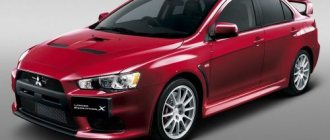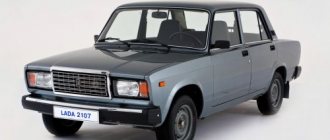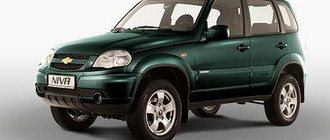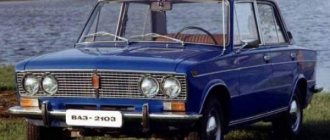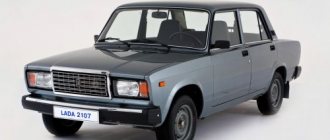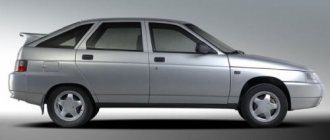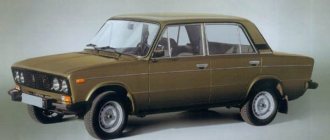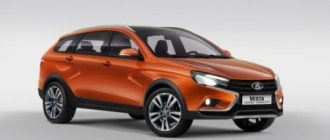By kanistra Posted on 21/10/2015
The first version of the Mitsubishi Lancer was shown to the auto world in 1973. As conceived by the developers, this model occupied a niche between the small Munica hatchback and the huge Galant sedan. Moreover, the body design pleasantly surprised with its variety. At the moment, Lancer has already 10 full generations. And it’s not a fact that the Japanese manufacturer will stop, because more than 6 million copies have already been sold, and this is worldwide recognition.
- 1.2.1 Owners about fuel consumption
- 1.3.1 Feedback on consumption
- 1.4.1 What they write about fuel consumption
- 1.5.1 Real consumption
- 2.1 Mitsubishi Lancer X 1.5 AT+MT 2.1.1 Real reviews about consumption
- 2.2.1 Fuel consumption in the city and on the highway
- 2.3.1 Reviews from car owners
- 2.4.1 Real reviews about consumption
- 2.5.1 Real consumption
Japanese company Mitsubishi
But first, let's say a few words about the company that produced this incredibly stylish and powerful car. Mitsubishi Motors Corporation is a famous Japanese company engaged in the creation of automobiles. It is believed that its founder was Yataro Iwasaki. It is the image of his family coat of arms that underlies the Mitsubishi symbol. This is the well-known shamrock - three diamond-shaped oak leaves arranged in the shape of a flower. The company's headquarters is located in Tokyo.
| Engine | Consumption (highway) | Consumption (city) | Consumption (mixed cycle) |
| 1.6 MIVEC 5-mech | 5.2 l/100 km | 8 l/100 km | 6.2 l/100 km |
| 1.6 MIVEC 4-auto | 6.1 l/100 km | 8 l/100 km | 7.3 l/100 km |
| 1.5 MIVEC | 6 l/100 km | 8.9 l/100 km | 7 l/100 km |
| 1.8 MIVEC | 6.1 l/100 km | 10.3 l/100 km | 7.6 l/100 km |
| 2.0 MIVEC | 6.6 l/100 km | 10.8 l/100 km | 8.1 l/100 km |
| 2.4 MIVEC | 8.4 l/100 km | 11.2 l/100 km | 10.2 l/100 km |
| 1.8 DI-D | 4.4 l/100 km | 6.2 l/100 km | 5.2 l/100 km |
| 2.0 DI-D | 5.2 l/100 km | 8.5 l/100 km | 6.4 l/100 km |
| 1.8 DI-D | 4.8 l/100 km | 6.8 l/100 km | 5.5 l/100 km |
Now the company is developing steadily. It has produced several world-famous series of machines that are respected throughout the world. These are ASX, Outlander, Lancer, Pajero Sport. One of the features of these cars is economical fuel consumption when driving on the highway.
Over the course of a year, the company manages to produce more than one and a half million “iron horses,” which are sold in one hundred and sixty countries around the world. And this is not the limit. The company continues to increase its turnover.
Lancer history
Pioneer
One of the most famous, successful and sought-after Mitsubishi series is Lancer. The first swallow of the line - the A70 model - saw the world at the end of winter 1973. It was produced in the following body styles:
- sedan with 2 doors;
- sedan with 4 doors;
- station wagon with 5 doors.
The engine size also varied (the larger the volume, the greater the fuel consumption):
- 1.2 liters;
- 1.4 liters;
- 1.6 liters.
Generation number two
In 1979, a new Lancer series appeared - EX. At first it was equipped with engines that could have three displacement options:
- 1.4 l (power - 80 horsepower);
- 1.6 l (85 horsepower);
- 1.6 l (100 horsepower).
But, a year later, another Lancer model appeared in the lineup with a more powerful engine - 1.8 liters. In addition, sports cars with other engines were produced.
In terms of fuel consumption, even the second generation Mitsubishi Lancer was very economical. The fuel consumption test, which passenger cars underwent in ten modes, showed fuel consumption of only 4.5 liters per 100 kilometers
. Well, if the Lancer owner drove mainly at a speed of 60 km per hour, then the fuel consumption was 3.12 liters per 100 km.
Third knee
The car of the third “level” appeared in 1982 and was called Lancer Fiore, had two body options:
- hatchback (since 1982);
- station wagon (since 1985).
Such Lancers were produced until 2008. A feature of this line was that the cars began to be equipped with turbocharging, as well as an injector. Like the previous ones, they were equipped with engines of different sizes, on which fuel consumption depended:
- 1.3 l;
- 1.5 l;
- 1.8 l.
Fourth generation
From 1982 to 1988, the fourth “circle” was updated. Externally, these cars began to be distinguished by the presence of diagonal lights. Engine modifications were as follows:
- sedan, 1.5 l;
- sedan, 1.6 l,
- sedan, 1.8 l;
- sedan diesel;
- station wagon, 1.8 l.
Attempt number five
Already in 1983, a new Lancer model appeared. Outwardly, she became much more interesting than her predecessors and almost immediately gained enormous popularity. The car was produced in four body styles:
- sedan;
- hatchback;
- station wagon;
- coupe.
Also, the future owner could choose the desired engine size:
- 1.3 l;
- 1.5 l;
- 1.6 l;
- 1.8 l;
- 2.0 l.
The gearbox could be 4 or 5 speed. Also, some models were produced with a three-speed automatic transmission, which greatly simplified driving.
Engine life and typical problems that arise during operation
The most problematic is the 1.5 liter engine. the failure of the design led to the fact that the engine loses compression already at 50-60 thousand on the odometer. This is due to the occurrence of the piston rings. To eliminate the malfunction, diagnostics, decarbonization, and in some cases a complete overhaul of the engine will be required.
Quite often, the 1.5 liter engine frightens the car owner with the Check engine indication. The check light is on not so much because of problems with the motor, but because of errors in the firmware. Updating the ECU software solves this problem. The electrical circuit also sometimes malfunctions.
The lowest-power motor is the most sensitive to the quality of the lubricant. Even if all oil change schedules are observed, the internal combustion engine repair will occur after a mileage of 120 to 150 thousand km. The resource of the power plant is extremely small. With a mileage of more than 80 thousand km, extraneous noise is observed. In addition to the fact that the engine runs loudly, it also revs frequently. The powerplant was so unsuccessful that Mitsubishi Group had to discontinue it.
The 1.6 liter power unit begins to consume oil after 100,000 km. The oil level ranges from 100 to 300 grams per 1000 km. The engine lasts about 200 thousand km, after which a major overhaul is required.
The 1.8 engine does not have hydraulic pushers. After 120 thousand km, problems begin with adjusting the valve clearances.
The 1.8 power plant has the longest service life among the entire line of engines. A rebuild may be required if the mileage is more than 300 thousand on the odometer.
The main malfunction of a two-liter engine is the clogging of the catalyst. To fix the problem you will need to install a special insert. The spider not only replaces the standard catalyst, but also reduces the swirl of exhaust gases. The service life of the 2.0 engine is about 250-280 thousand km.
Mitsubishi Lancer 6
The sixth series first appeared in 1991. The company has provided many modifications to this line. Thus, it was possible to purchase cars with an engine capacity from 1.3 liters to 2.0 liters. The most powerful one ran on diesel fuel, all the others ran on gasoline. They also had slightly different bodies: there were two- and four-door versions, sedans and station wagons.
Lucky number seven
The seventh generation became available to buyers in the early nineties. While maintaining the original design style of its predecessors, the car became even more like a sports car. At the same time, the aerodynamic drag became even lower and reached 0.3. The Japanese improved the suspension and added airbags.
Eighth, ninth and tenth generations
It appeared in the year two thousand. The appearance of the car has become even more interesting and noticeable. Buyers from all over the world can purchase a model with a manual or automatic transmission. This car was produced for three years.
And in 2003, a new product appeared - Lancer 9. Well, ten months later the Japanese improved the “heart” of the car, increasing its volume to 2.0 liters. This car has become very popular.
But even it was “outdone” by the tenth version of Lancer. The company presented several types of engine power and body styles. So anyone who always strives to be on top and keep up with the latest automotive innovations can safely choose Lancer X. This car will emphasize the style, status and good taste of its owner.
Chassis
The 10's suspension is noticeably nicer than the previous generation's: it bounces over bumps and jumps over speed bumps. But when cornering, the car is unable to hold the road and rolls in all directions. And this is not at all what you expect from the heir to the legendary rally past.
According to reviews from owners about the Lancer, after 45 thousand km the original stabilizer bushings have to be changed, and at 70 thousand km the rear silent blocks have to be changed. By 90 thousand, the stabilizer struts and front shock absorbers “die”. It’s good if the previous owner chose high-quality analogues, and they last just as long.
In the rear suspension, the outer silent blocks of the transverse arms are the first to give out - already by 90 thousand km. The remaining parts last up to 150 thousand km.
Well, now let’s pay special attention to the latest models of the Japanese automobile industry.
Mitsubishi Lancer 9
Before buying a car, did you read many forums where the “pros” and “cons” of the ninth generation Lancer were discussed? Then, for sure, you know that the manufacturer of this series took good care of the safety of the driver and passengers, equipping the car with a reliable chassis, high-quality suspension, an effective braking system, an ABS system and much more.
The Japanese also did a good job on the engine. It is made of high-quality alloys and has low toxicity. Its use of fuel is very economical, so its consumption is low. If you look at the technical specifications, you will find out that in the ninth generation on average
:
- Mitsubishi Lancer fuel costs in the city are 8.5 liters per 100 kilometers if a manual transmission is installed, and 10.3 liters if automatic;
- The average gasoline consumption of the Lancer 9 on the highway is much less and is 5.3 liters with a manual transmission, and 6.4 liters with an automatic transmission.
As you can see, the car does not “eat” a very large amount of fuel. Actual fuel consumption may differ slightly from the data indicated in the technical specifications.
Mitsubishi Lancer 10
Style, sport, modernity, originality - these are the characteristics of the appearance of the tenth generation of Lancers. The peculiar, even slightly aggressive, appearance of the tenth Lancer, reminiscent of a shark’s gaze, is its undeniable “highlight” that cannot but be remembered. Well, the high-quality materials that cover the car’s interior will not leave anyone indifferent.
The manufacturer offers models with automatic and manual transmissions. Numerous airbags guarantee a high level of safety. A nice feature is the low fuel consumption.
Fuel consumption
Let's take a closer look at the gasoline consumption of the Mitsubishi Lancer 10. As in the Nine, it differs for cars with a manual and automatic transmission. Fuel consumption for a Mitsubishi Lancer 10 with an engine capacity of 1.5 liters is
:
- in the city - 8.2 l (manual transmission), 9 l (automatic transmission);
- on the highway - 5.4 l (manual transmission), 6 l (automatic).
Let us note again that these are technical data. Actual fuel consumption of Lancer 10 per 100 km may vary. It depends on the quality of the fuel and driving style.
How to “reduce appetites” for cars
You can make your car use less gas. To reduce fuel consumption, you need to follow a few simple rules:
- Keep the fuel filters clean at all times. When they become clogged, the amount of gasoline consumed increases by at least three percent.
- Use properly selected quality oil.
- Make sure that the air pressure in the wheels is appropriate. Even with slightly flat tires, fuel consumption increases.
That's all! We reviewed the history of Mitsubishi Lancer cars and answered questions about Mitsubishi Lancer fuel consumption.
Years of manufacture
As for seasonal fluid, its choice also depends on the year of manufacture of the vehicle. Let's pay attention to the optimal viscosity parameters for summer and winter, depending on the Lancer 10 model range, and also highlight the best brands:
Model range 2008
- Summer season – 20W-40, 25W-40
- Winter season – 0W-40, 5W-40
- The best brands are Lukoil, Mobile, ZIK, Kixx, Valvoline, G-Energy, Xado
Model range 2009
- Summer oil – 20W-40, 25W-40
- Winter oil – 0W-40, 0W-30
- The best brands are Mobile, Kixx, Lukyol, Castrol, Xado, ZIK, Valvoline
Model range 2010
- Summer – 20W-40, 25W-40
- Winter – 0W-40, 5W-40
- The best brands are Lukoil, Xado, Mobile, Valvoline, Shell, Castrol, Zik, Gt-Oil
Model range 2011
- Summer – 20W-40, 25W-40, 25W-50
- Winter – 0W-40, 5W-40, 5W-50
- The best brands: Castrol, Lukyol, Mobile, Xado, GT-Oil, Shell, Zik, Valvoline
Model range 2012:
- Summer: 20W-40, 25W-50
- Winter: 0W-40, 5W-50
- The best brands: GT-Oil, Shell, Zeke, Valvoline, Lukyol, Mobile, Xado, Castrol
Model range 2013
- Summer – 20W-40, 25W-50
- Winter – 0W-40, 0W-50
- Best brands: Castrol, Shell, Mobile, Zik, Xado
Model range 2014:
- Summer – 20W-40, 25W-50
- Winter – 0W-40, 0W-50
- The best brands: Shell, Castrol, Mobile, Xado.
As for mineral oil, this type of lubricant is very rare in Mitsubishi Lancer X engines. The manufacturer fills in synthetics or, in extreme cases, semi-synthetics.
